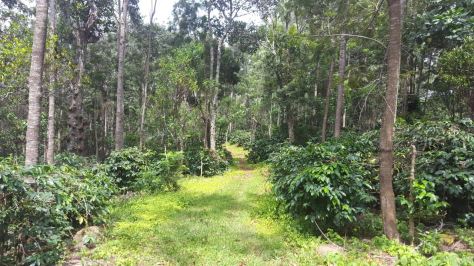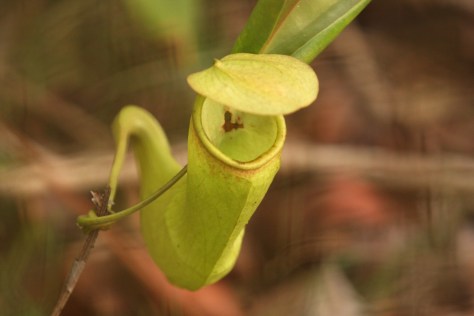Trip Report: Galibore Nature Camp
Dates: 10-11 Oct 2016
Who: P and H

A single night at Galibore planned on impulse. And an interesting trip it turned out to be.
My good friend and ace birding guide Thomraj had been convalescing after a kidney stone procedure and returned by forenoon the same morning I reached. Meanwhile Govind and I took a walk down the road eastwards after paying our customary respects to the resident Brown hawk owl. Greenish warblers called from virtually every tree – thousands of them must have migrated into our southern forests at this time as they were all over the place here, in Yercaud, and doubtless elsewhere too. The weather was cool in the shade but mildly uncomfortable in the sun. We found a quiet spot by the river to sit in. A Sirkeer malkoha flew past rousing us and we tailed it to where it settled. On the way back, we spent a while watching a White-rumped shama which posed for us, while a flock of Tawny-bellied babblers foraged in the thickets around it. Govind meanwhile delivered a little lesson on the nuances of chital pellets. The stags evidently drop elongated ones while the does’ tend towards the spherical. We spent some time picking pellets off the forest floor to assess them.

Lesser fish eagle
One of the most special things to do in Galibore is the walk back from the coracle alighting point at sunset. The walk through the forest in the fading light for a few kilometers offers potential for interesting encounters. A few days back, Thomraj, Govind and another staff member heard langurs calling, waited and were rewarded with a leopard sighting. Thomraj also related another recent story about a tusker that entered the water on the opposite bank on sighting them and swam across at alarming speed, causing them to abandon the coracles and scramble for the jeep. However on this day, all we did was to pause awhile to admire a brace of Painted spurfowl and a twittering Brown-capped pygmy woodpecker.
There are always interesting elephant stories to catch up on in each visit. Like the one about a lone elephant that approached the kitchen building one night not long back. Or the one about how Thomraj ran into a herd while on his motorbike, in the forenoon a few days back. He had to flee back to the camp and have a jeep escort his bike through the herd.
I had intended to sit on the promontory late into the night listening, but a crew was working on fixing a faulty water pump by the river accompanied by great noise and light. I went to bed after waiting in vain for them to finish, around midnight. Alarm calls erupted at 2 AM, but I was too sleepy to step out. Two animals were calling; one was a sambar. I had forgotten that sambar occurred here, but Thomraj confirmed this the next morning. The other was a call I struggled to place – Thomraj hadn’t noticed the calls themselves, but surmised (the next morning) that chital sometimes call with a hoarser version and that was probably what I’d heard. Incidentally, we also heard a four-horned antelope repeatedly calling in alarm during the evening coracle ride – first time I’ve heard one.
With some guidance from my pal VV, I’ve been doing some homework on butterflies over the past few days and found occasion to test my rank beginner skills in the green patch between the promontory and the river that attracts large numbers of butterflies. Commonly seen species were White orange-tip, Common wanderer, Common mormon, Common grass yellow, Yellow orange-tip and Tawny coster. There was also what I thought was the Indian skipper, but checking the coloration subsequently revealed that it was something else. Also identified, probably correctly, Plain tiger and Common jezebel elsewhere.
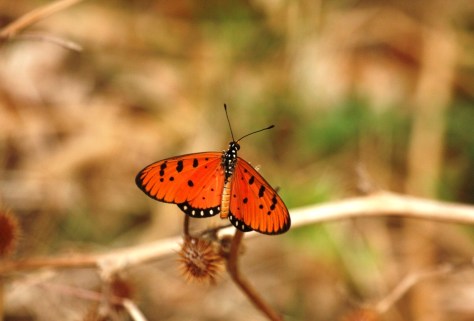
Tawny coster
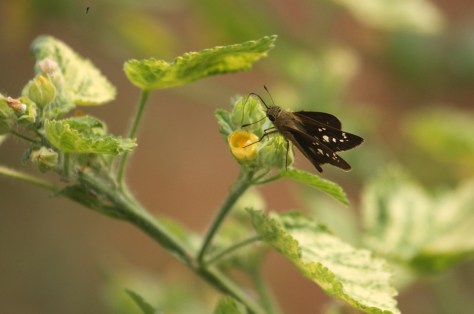
Skipper sp.

Yellow orange-tip

White orange-tip
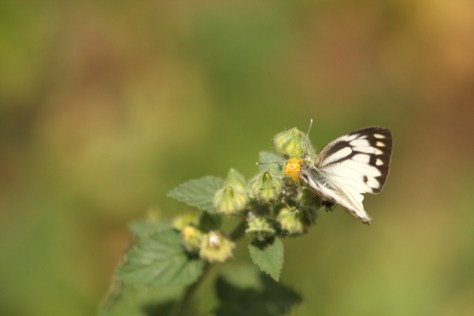
Wrongly ID’d as Common wanderer. VV pointed out that this is probably a Common gull.

This is the plant that attracts butterflies in numbers. Karthik (www.wildwanderer.com) subsequently helped ID it as Sida sp.
On day 2, just before we departed the camp, a juvenile Grizzled giant squirrel lost its grip and came crashing down from the canopy. It sat stunned for a while but otherwise seemed none the worse for its fall, and was soon racing back up the bole.
Three special sightings this time. Post lunch, a pack of four dhole trotted westwards on the opposite bank, walking in single file close to the water’s edge. They paused to stare at the camp and then continued their way upstream.
At sunset, the new manager Abhijit and I were chatting while I was idly gazing at a black object on the opposite bank. It took a while for the lights to come on, but I eventually realized that the object was a foraging sloth bear. As it often happens, the bear wandered out of sight shortly after this realization struck.
On the second morning, Thomraj and I walked westwards on the road towards the Hyra camp (which is what I remember it’s called) a couple of kilometers away. We were treading on fresh elephant spoor; a bull elephant that Thomraj figured was a known single tusker had passed not long back. Thomraj was on high alert, scanning the jungle ahead with utmost care while simultaneously trying to find birds. The spoor veered off into the jungle a short way before the FD shack at Hyra and we turned back shortly after that.
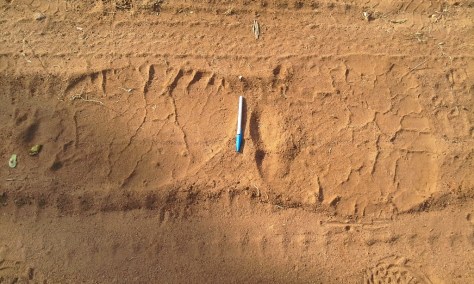
Bull elephant spoor. Fore and hind feet. The larger print to the right is of the hind foot.

Sloth bear pugmarks. Fore and hind feet. Print on the right is of the hind foot.
On the way back, we had a superb Southern tree shrew sighting. First time I’ve seen one in the Cauvery WLS. Thomraj also showed me a small, partially buried stone a short way off the track which purportedly shows ancient etchings in Tamil-like script.

Unidentified lizard in the forest
- Alexandrine parakeet (calls)
- Asian paradise flycatcher (calls)
- Black-hooded oriole (calls)
- Blue-faced malkoha
- Brahminy kite
- Brown-capped pigmy woodpecker
- Brown hawk owl
- Common iora
- Common kingfisher
- Common myna
- Common skylark
- Common tailorbird
- Common woodshrike
- Darter
- Golden-fronted leaf bird
- Great cormorant
- Green bee eater
- Greenish warbler
- Grey junglefowl
- Green imperial pigeon
- Hoopoe
- Indian grey hornbill
- Indian robin
- Jungle babbler
- Jungle crow
- Jungle owlet (calls)
- Lesser fish eagle
- Lesser flameback
- Little cormorant
- Egret (unidentified)
- Magpie robin
- Painted spurfowl
- Peafowl
- Pied kingfisher
- Purple-rumped sunbird
- Red-rumped swallow
- Red-vented bulbul
- Red-wattled lapwing
- Red-whiskered bulbul
- Rose-ringed parakeet
- Sirkeer malkoha
- Spotted dove
- Stork-billed kingfisher (calls)
- Tawny-bellied babbler
- Tickell’s blue flycatcher
- White-bellied drongo
- White-browed bulbul (calls)
- White-browed wagtail
- White-cheeked barbet (calls)
- White-rumped shama
- White-throated kingfisher
- Wire-tailed swallow
- Yellow-billed babbler
- Yellow-crowned woodpecker
- Bonnet macaque
- Chital
- Dhole
- Four-horned antelope (alarm calls)
- Grizzled giant squirrel
- Tufted langur
- Mugger
- Sambar (alarm calls)
- Sloth bear
- Southern tree shrew















